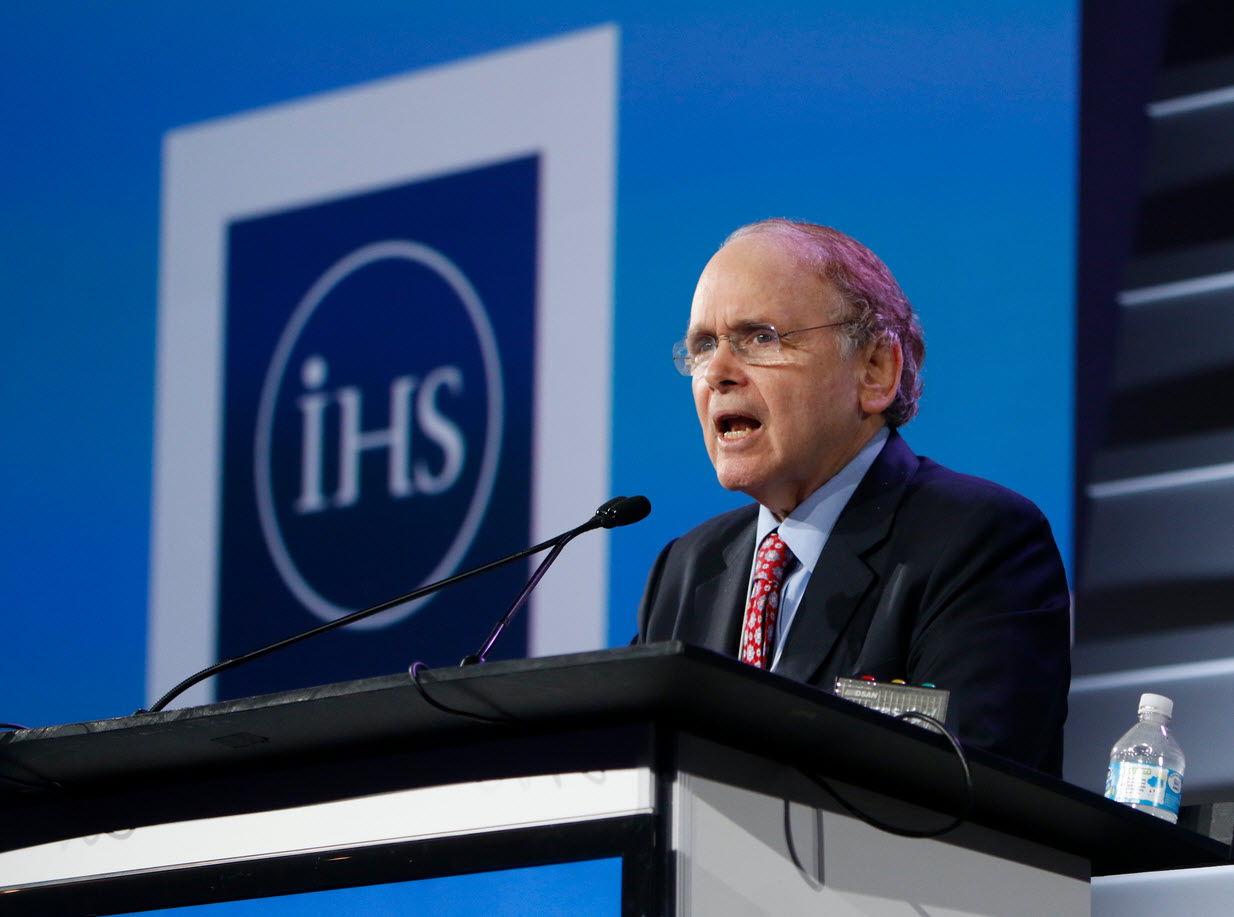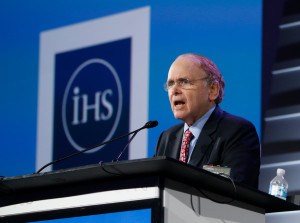Commentary – The Top Themes from CERAWeek 2015
Last week thousands of well tailored dark suits gathered in Houston for the annual IHS CERAWeek, one of the world’s top energy conferences. Despite slashed oil budgets, CEOs, political leaders and investors showed-up in near record numbers to hear perspectives on how the future may unfold. Here are seven themes that recurred in the crowded conference meeting rooms:
1. Expect a low and volatile oil price. Exxon’s CEO Rex Tillerson echoed the sentiment of most industry professionals, saying “This [low price] is with us for a while… some bumps this way and that…but people need to settle in for a different price environment for the next couple of years”. This, uncertain, bearish mindset will change spending patterns. Companies will favor tactical investing in short-cycle North American light tight oil and shale gas. Unlike long-term megaprojects, that require billions of high risk dollars over many years, paybacks in domestic resource plays are quick, and spending can be adjusted with each gyration in corporate cash flow. Total’s CEO, Patrick Pouyanne, predicted that the lack of large project investments would crimp supply and tighten the oil markets sometime in the next three or four years.
2. North American natural gas price will stay stable and cheap. In prior CERA conferences, participants debated the potential for a higher continental natural gas price. However, low price coupled with years of production gains, including last year’s stunning production surge, have all but ended the conversation. The silver lining? A bargain price and low volatility is catalyzing investment on the demand side. After all, a new ethylene cracker, power plant, or gas liquefaction terminal requires a multi-billion-dollar bet on natural gas remaining cheap.
3. The industry’s cost structure is declining. Since the arrival of horizontal drilling and fracking, a long list of innovations has lowered the cost of extracting each cubic foot of gas or barrel of oil. However, conversations about new technologies were secondary at CERAWeek this year. The focus shifted to oilfield service price cuts, reportedly already down by about 20% year-over-year. For international projects, the discussion focused on government take. To have any hope of investment, said many CEOs, fiscal terms and local content rules in foreign jurisdictions must be drastically altered. The implication? Assuming that sustainable cost reductions can be achieved, all else being equal, then the long-term oil price may be lower than historical expectations.
4. Compared with previous downturns, capital is plentiful in North America. Contributing factors include low interest rates and a belief that the sector is undervalued (especially when compared to the frothy valuations found in other asset groups). Abundant capital increases the chance that a struggling company can receive a financial lifeline. All things the same, this will reduce the number of distressed assets sales. Excess capital could also frustrate the pace of the recovery by allowing companies to drill beyond their cash flows.
5. Workforce reductions are a worry. Despite a lack of cash, some leaders are reluctant to make headcount reductions or slow the hiring of new graduates. Their rational? The industry’s demographics have not changed. The baby boomers will still retire. Plus, deep headcount reductions will cripple a company’s ability to respond to an oil price recovery.
6. Geopolitical risk still matters. Compared to last year, when Russia’s invasion of the Ukraine dominated CERAWeek discussions, geopolitics received relatively less airtime. However, when the topic was raised, executives acknowledged that the possibility of an unplanned outage somewhere in the world remains high. Geopolitical risk has increased in places like North Africa and the Middle East. Numerous other world events highlight a more unstable oil producing world, including the amplifying effects of the increasing financial strain on oil exporters like Venezuela. So don’t mistake less geopolitical discussion on stage for less risk.
7. The list of policy issues remains long. Without a doubt the top policy headache discussed at the conference was regulatory delays for North American energy infrastructure projects. The Keystone XL saga was featured as the poster child of a broken system. Despite the imminent slowdown in US oil production, the case to remove the US crude oil export ban remains a top concern. The lion’s share of the GHG discussions occurred in the sessions on power generation, notably around coal. The US power industry broadly deems the EPA’s upcoming Clean Power Proposal as unachievable. The EPA also has its eye on the US oil and gas sector. A new plan for reducing methane leakage from natural gas infrastructure is expected later this summer.
CERAWeek helped shed some light on the long list of issues that are keeping global energy leaders awake at night. But even considering their strained balance sheets, industry leaders came out in large numbers and displayed an air of optimism. After all, volatile times often create new windows of opportunity for leaders that know how to take advantage of turmoil.



